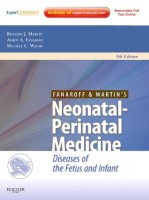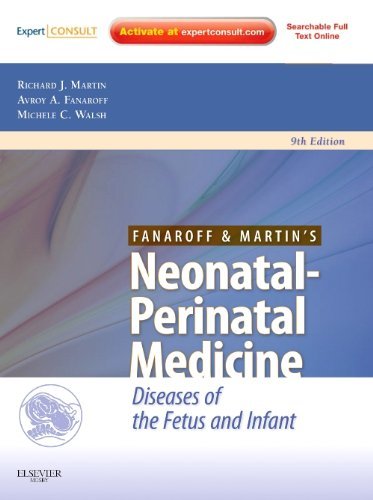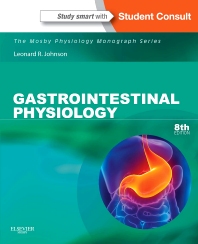 Editors: Richard J. Martin, Avroy A. Fanaroff, and Michele C. Walsh
Editors: Richard J. Martin, Avroy A. Fanaroff, and Michele C. Walsh
Publisher: Elsevier-Mosby – 1837 pages
Book Review by: Nano Khilnani
Neonatal, as most people know, refers to newborn children, but perinatal refers to varying periods of time spanning before and after birth, depending on which dictionary you consult.
In any case, the editors point out that the specialty of neonatal-perinatal medicine has been officially in existence only since 1975, when the American Board of Pediatrics first offered a certification exam for those who wanted to get a license for employment and practice in this field.
That was about 40 years ago today. And in 2007, there was a relatively tiny number – 4,428 men and women – who were certified neonatologists, representing less than one percent of the estimated 700,000 physicians in the United States today.
While this field of specialized care for the preborn and newborn is relatively new when you take certification into account, its practice has been around for centuries. As early as 1534, Vesalius observed fetal breathing movements in pigs, and about a century later in 1648, Pare taught that the absence of movement suggests a dead fetus.
New knowledge in the field of neonatal-perinatal medicine has greatly expanded in recent years, with research and new discoveries. And now with instant sharing of text and graphics possible in our Internet Age, new information is growing at an explosive rate.
In 1975 when certification in neonatology began, it was unlikely there was enough information in this field to fill more about 1,800 pages – the length of this two-volume text. Nor would it have been likely to easily locate around 150 people around the world to contribute to this book. But now, it is not only possible; it is a reality.
Some 146 people – mostly doctors, and experts in allied fields – from the United States and the following countries: Belgium, Canada, India, Israel, Italy, the Netherlands, Norway, Spain, Sweden, Switzerland, and United Kingdom, wrote the 54 chapters of his book, which are organized around the following six sections in this two-volume book:
Volume 1
- The Field of Neonatal-Perinatal Medicine
- The Fetus
- Pregnancy Disorders and Their Impact on the Fetus
- The Delivery Room
- Provisions of Neonatal Care
Volume 2
- Development and Disorders of Organ Systems
Appendices
- Therapeutic Agents
- Tables of Normal Value
- Schedule for Immunization of Preterm Infants
You can activate your access at www.expertconsult.com. Do the following:
- Register
- Visit www.expertconsult.com
- Click Register Now
- Fill in your user information
- Click Create Account
2. Activate your book
- Scratch off your Activation Code on the sticker found on the inside front cover of your book
- You’re done! Click on the book’s title under My Titles
For technical assistance, email: [email protected] or call 800-401-9962 (inside the U.S.) or 1-314-995-3200 (outside the U.S.).
Here are some of the tasks you can do confidently through the information in this book:
- Access the full-searchable contents of this book online at www.expertconsult.com, along with a downloadable image gallery.
- Spot genetic problems early and advise parents of concerns thanks to a completely new section on this topic.
- Tackle the health problems associated with preterm births through a new chapter on The Late Preterm Infant.
- Understand the fetal origins of adult disease through a new chapter that focuses on conditions that originate in the womb.
- Stay currents on the developments and research surrounding neonatal anemia from the chapter on Blood and Hemapoietic System highlights, as well as updates on virtually every organ system in the fetus and neonate.
- Obtain more global perspectives and best practices from an increased number of international contributors in this edition.
- Get comprehensive guidance on treating patients through a dual focus neonatology and perinatology.
- See nuances and details in over 800 illustrations that depict disorders in the clinical setting and explain complex information.
- Find the information you need easily with indexing in both volumes that provides quick access to specific guidance.
While the knowledge and experience of neonatologists has been growing in recent years and there are fewer stillborn babies and fewer deaths in the initial weeks and months of an infant’s life, the three editors point out in their Preface that “the high early morbidity and persistent neuro-developmental problems remain a cause for concern.” They point out that some of these problems remain:
- Broncho-pulmonary dysplasia
- Cerebral palsy
- Hypoxic-ischemic encephalopathy
- Inability to sustain the intrauterine rate of growth when infants are born prematurely
- Necrotizing enterocolitis
- Nosocomial infections
This book presents many well-researched and cogent articles that follow the recent ideal of evidence-based medicine. The organization and presentation of the materials is also excellent. As an example let us take a look at chapter 13, Developmental Origins of Adult Health and Disease written by Dr. Sherin U. Devaskar and Dr. Kara Calkins, professor and clinical instructor respectively at David Geffen School of Medicine at UCLA in Los Angeles.
The authors discuss the Barker hypothesis, which traces the origins of certain diseases and conditions in adults back to their parents. They write at the beginning of this chapter: “The concept of fetal origins of adult disease popularized by Barker arose from a robust association between small size at birth and the risk of chronic adult diseases, such as coronary artery disease, hypertension stroke, type 2 diabetes mellitus, and osteoporosis.”
They add: “These original epidemiologic observations have been extensively replicated (emphasis mine) by multiple groups in varying populations of different ethnicity employing birth weight a surrogate for the intrauterine state.” The go on to write that during the 1944-1945 Dutch famine, women who had previously been well nourished had low caloric intake because they were eating less due to the widespread shortage of food.
The children of these women survivors of that famine, when they turned to age 50 to 60 years old, had in general, a higher incidence of cardiovascular disease, glucose intolerance or insulin resistance, and hypertension, the authors point out. They discuss this and other related topics in this chapter, namely:
- Influences of the Early Embryo
- Postnatal and Early Childhood Growth
- Catch-Up Growth
- Mismatch Concept
Drs. Devaskar and Calkins also importantly, present two charts: one of women and the other of men. The charts show that both women and men who had lower birth weights had higher rates of mortality.
The authors of other chapters in this book also discuss topics at length, as well as show data from research studies as evidence of contentions and support for statements they make. This is one of the best features of this valuable book, due in part to the guidance of the editors we name below, who have produced this truly outstanding, comprehensive, and well-written volume.
Richard J. Martin, MBBS, FRACP is Professor of Pediatrics, Reproductive Biology, and Physiology and Biophysics at Case Western Reserve University School of Medicine; and Drusinksky/Fanaroff Chair in Neonatology, and Director of the Division of Neonatology at Rainbow Babies and Children’s Hospital in Cleveland, Ohio.
Avroy A. Fanaroff, MD, FRCP (EL), FRCPCH is Professor of Pediatrics and Reproductive Biology at Case Western University School of Medicine; and the Eliza Henry Barnes Chair in Neonatology at Rainbow Babies and Children’s Hospital in Cleveland, Ohio.
Michele C. Walsh, MD, MSE is Professor of Pediatrics at Case Western University School of Medicine; Co-Director of the Division of Neonatology; and Medical Director of the Neonatal Care Unit at Rainbow Babies and Children’s Hospital in Cleveland, Ohio.







